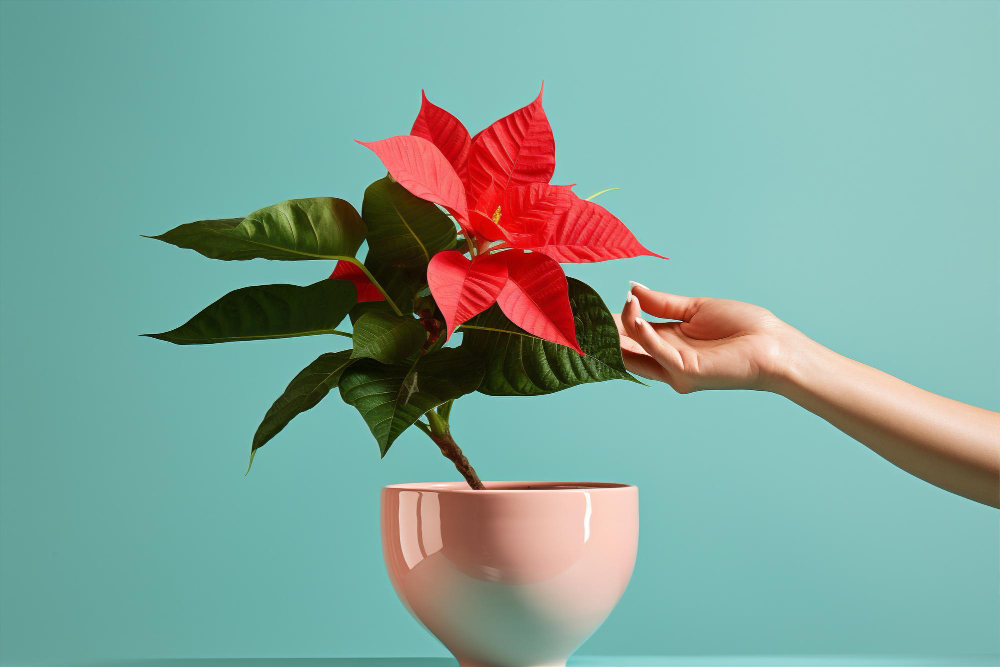Poinsettias, with their vibrant red and green foliage, are a hallmark of the holiday season, bringing warmth and color to homes during the colder months. Native to Mexico, these tropical plants require specific care to maintain their festive appearance and ensure their longevity beyond the holiday season. Proper care involves understanding the plant’s natural lifecycle and providing an environment that mimics its native habitat as closely as possible. This article offers a comprehensive guide on how to care for poinsettias, covering everything from selecting a healthy plant to post-holiday care and reblooming techniques.
Selecting a Healthy Poinsettia
The journey to a thriving poinsettia begins with selecting a healthy plant. Look for poinsettias with dark green foliage down to the soil line, which indicates good health and proper care prior to purchase. The colorful bracts (the plant’s most notable feature) should be fully colored without green around the bract edges, and the true flowers, located at the center of the bracts, should be green or red-tipped and not yet open. Avoid plants with wilted leaves or signs of stress, such as drooping or yellowing, as they may struggle to adapt to new environments.
Providing the Right Environment
Poinsettias thrive in conditions that replicate their natural habitat—bright, indirect sunlight, and warmth. Place your poinsettia near a sunny window where it will receive at least 6 hours of daylight. Avoid direct sunlight, as it can scorch the leaves. These plants prefer temperatures between 65-70°F during the day and slightly cooler at night. Protect them from drafts and drastic temperature changes by keeping them away from doorways and heating vents. The ideal environment mimics the bright, warm days and cool nights of the tropics.
Watering and Humidity
Proper watering is critical to poinsettia care. The soil should be kept consistently moist, but not soggy. Allow the top inch of soil to dry out before watering again to prevent root rot. When watering, do so thoroughly, allowing excess water to drain away. Never let the poinsettia sit in water, as this can lead to root decay. Since poinsettias prefer a humid environment, consider placing a humidifier nearby or a pebble tray with water beneath the plant to increase humidity.
Fertilizing for Growth
While poinsettias don’t require heavy feeding, applying a balanced, all-purpose fertilizer every 2-3 weeks can support their growth and bract coloration. However, it’s important to wait until the holiday blooming period is over before starting any fertilization regimen. Over-fertilizing can damage the plant and detract from its vibrant colors. Follow the recommended dilution rates on the fertilizer packaging to avoid overfeeding.
Post-Holiday Care and Rebloom
After the holiday season, poinsettias enter a rest period that lasts several months. Gradually reduce watering to allow the plant to rest and withhold fertilizer during this time. As spring approaches, prune back the stems to about 6 inches to promote new growth. This is also the time to resume regular watering and fertilization. To encourage reblooming, poinsettias require about 14 hours of complete darkness each night starting in late September. This mimics the natural light cycle of their native environment and triggers the development of the signature red bracts. During the day, the plant should continue to receive bright, indirect sunlight.
Flourishing Beauty Beyond the Season
With the right care, poinsettias can go beyond being a seasonal decoration to become a year-round houseplant that brings color and life to your home. Understanding and replicating the plant’s natural conditions as closely as possible is key to achieving this transformation. By following these care guidelines, from selection to post-holiday maintenance, your poinsettia can thrive and rebloom, making it a cherished part of your holiday traditions for years to come.
